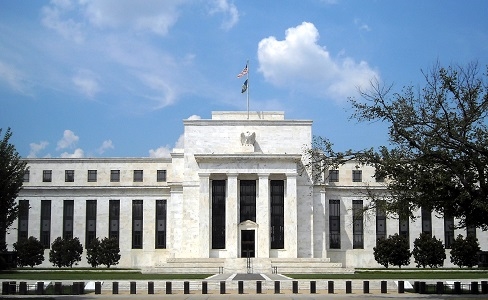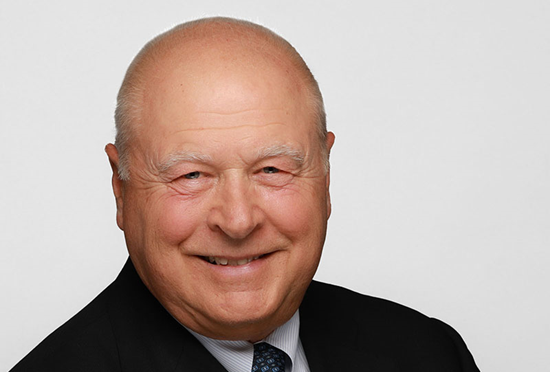ANALYSIS: US Treasuries market braces for clearing mandate

The mandate to force the central clearing of US Treasury securities and repo, slated to take effect at the end of next year, will position that market to deal better with stress in future but liquidity will ultimately suffer, experts have warned.
Speaking on a panel hosted by the Institute of International Finance, US Treasury securities experts discussed the efforts to impose central clearing in the vast US fixed income market and their likely effects.
Nate Wuerffel, head of Market Structure at BNY Mellon, told the panel on Tuesday the regulation is designed to reduce counterparty default and firesale risks in stressful periods or in the event of a default, and he suggested this will likely happen because firms will be “less likely to pull back in those times of stress”.
Wuerffel cited examples in the pandemic when US Treasuries prices were affected in times of extreme market stress by some firms limiting their exposure to counterparties they perceived to be at risk of default.
“In a centrally cleared work, you face the central counterparty (CCP) so we think the counterparty systemic risk could go down in times of stress and balance sheet capacity could move up. Central clearing offers netting benefits because it takes the trade off the balance sheet of an intermediary.”
He continued: “But there are trade-offs to any rule and a public policy debate is always about the trade-offs. In this case, central clearing is a little bit like paying an insurance premium because you pay the central counterparty to clear those trades and pay margin to the CCP, and there’s typically a liquidity fund which requires liquidity commitments on behalf of its members, so all of those things come with cost.”
Wuerffel added: “If you trade in the treasury market, transaction costs will be higher and that means that bid-ask spreads are going to be wider as well because you are paying the freight of central clearing.”
The BNY Mellon expert suggested that “low-margin, high-volume trading strategies” will naturally be most affected as will firms trading spreads between the US Treasuries and futures.
Wuerffel concluded: “The total amount of margin that needs to be collected and posted to CCPs is going to be much higher and that is going to change the dynamics between CCP members and their clients in terms of who pays margin, how frequently that margin is paid, and there are also new mechanisms to pass margin along to the CCP that are very important.”
Laura Klimpel, managing director and head of Fixed Income and Financing Solutions at Depository Trust & Clearing Corporation (DTCC), highlighted an issue with the current regulation of cross-margining between US Treasuries and futures.
“Although we offer cross-margining between cash and repo positions cleared by FICC and interest rate futures positions cleared by CME, currently the only type of cross-margining that has been approved by the SEC, which regulates the cash markets, and the CFTC, which regulates the futures markets, has been cross-margining between positions that I will call “house” or positions of the clearing members themselves.”
The DTCC, which runs the Fixed Income Clearing Corporation (FICC), the only US Treasuries clearing house, and CME Group launched in January an expanded margin service covering US interest rates instruments.
Klimpel added: “Right now, underlying customers of clearing members cannot have at the CCP level offsets recognised between their futures and cash books. This is something that we feel quite passionately about which needs to be part of the evolution of the Treasury market to ensure efficiency for market participants in terms of the additional cost of margin that will need to be posted.
“We want to make sure that margin is efficient as possible and to do that we need regulatory approval to be able to recognise the offsets against the futures positions at CME.”
Klimpel concluded: “That’s an area of service enhancement that we and many in the market are focused on so expect to see us putting out rule-changes in connection with that.”
Haoxiang Zhu, director, Division of Trading and Markets at the Securities and Exchange Commission, was asked about the prospect of more firms securing approval to clear US Treasuries.
He said: “Certain market participants have reached out to us and want to be in the business of clearing US treasury securities. CME for example made a public announcement.”
CME Group chief executive Terry Duffy said in March it was a “no-brainer” for the US group to apply to clear US Treasuries.
Zhu added: “Generally, we welcome additional interest from clearing houses engaging with this business. Competition is ultimately good for the market.”
Found this useful?
Take a complimentary trial of the FOW Marketing Intelligence Platform – the comprehensive source of news and analysis across the buy- and sell- side.
Gain access to:
- A single source of in-depth news, insight and analysis across Asset Management, Securities Finance, Custody, Fund Services and Derivatives
- Our interactive database, optimized to enable you to summarise data and build graphs outlining market activity
- Exclusive whitepapers, supplements and industry analysis curated and published by Futures & Options World
- Breaking news, daily and weekly alerts on the markets most relevant to you



